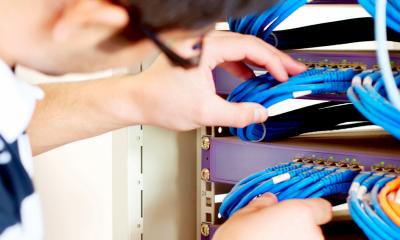
Poorly maintained IT systems could cause a major problem for your business, if key hardware breaks down at a crucial point or a cyber attack compromises your data. Stay on top of your maintenance and breathe easy.
- Your business depends on an IT system that works without fault. A well-maintained system means your IT is secure and up to date. You can avoid costly downtime by regularly checking and updating the software you use and your devices’ operating systems.
- Don't ignore IT maintenance. Are your software licenses all up to date? Is your anti-virus software doing its job? Is it time to update your passwords? Regular maintenance ensures you know the answers to important questions like these and makes sure you're in control of your IT systems.
- Draw up a schedule for your IT maintenance, broken into daily, weekly, monthly and less-frequent tasks. The frequency depends on how critical that part is for the day-to-day running of your business. You should back up data daily, for example.
- Both your IT equipment and the software you run need regular checks. For example, if you are a designer, your computer screens might need calibrating at specific intervals.
- Some maintenance tasks can be automated, saving you time. You can set software to automatically check for and run updates so you always have the latest version - this is especially important for anti-virus and security software. Schedule on-site and cloud backups to run throughout the day - just make sure you check the automation is working.
- Keep a record of all software licenses plus renewal dates and the age of any hardware such as screens, keyboards and mobile devices. This will help you identify when software or equipment should be upgraded or replaced.
- Make monitoring part of your IT maintenance. Knowing how members of staff use IT can help how you maintain it. If staff type a lot of reports, keyboards and mice might need replacing more often. Monitor and check hardware separately from software.
- Online security threats can damage your business. As part of your IT maintenance, make sure your firewall and security software are doing their jobs. Keep virus and malware scanners up to date.
- Regular tasks don't have to be too arduous as long as you stay on top of them. They don't all have to be carried out by experts either. For instance, anyone can perform simple tasks like clearing the dust out of computer fans.
- Consider outsourcing IT maintenance. Failing to perform regular maintenance can ultimately damage your business, so outsourcing maintenance to your IT supplier can be a wise investment.



